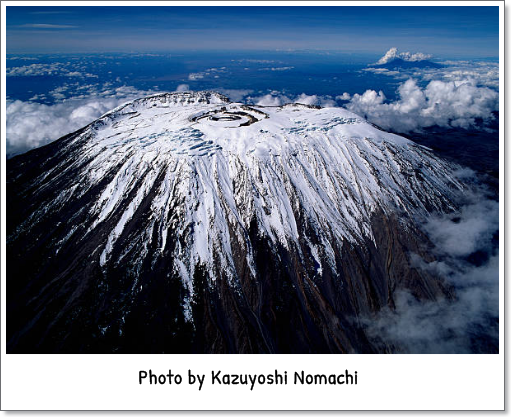How did mountains get their names?
Did you ever considered what the names of the mountains mean? Did you ever considered that the name of a mountain can tell a lot about the mountain itself, the person or people who name it, or about the region?
Let’s check how some of the most famous mountains on earth got their names.
- Mount Everest
Initially known as Peak XV, Mount Everest was named in 1856, after Sir George Everest, who was the superintendent of the Trigonometrical Survey of India. Everest himself initially was displeased by the naming, because he feared that the local habitants wouldn’t be able to pronounce it.

- K2
Formerly known as Mount Godwin-Austen (after Col. H. H. Godwin-Austen, who first surveyed it), K2 stands for Karakoram 2, because it was the second peak to be surveyed in the Trigonometrical Survey in the Karakoram system.

- Kanchenjunga
The name Kanchenjunga derives from four words of Tibetan origin, usually rendered Kang-chen-dzo-nga or Yang-chhen-dzö-nga and interpreted in Sikkim as the “Five Treasures of the Great Snow”. Kanchenjunga holds an important place in the mythology and religious ritual of the local habitants.

- Lhotse
Lho means South and tse means Peak, so Lhotse means South Peak in Tibetan, reflecting Lhotse’s unfair status as an inferior checkpoint en route to the bigger prize.

- Makalu
Makalu originates from Sanskrit. “Maha-Kala” neams “Big Black” and it’s named after Shiva, an important Hindu God known for destroying everything old and unnecessary.

- Cho Oyu
The name Cho Oyu means “Turquoise Goddess” in Tibetan. Being that “chomo” means goddess and “yu” means turquoise, consequently “Chomo Yu” has changed into Cho Oyu in the course of time.

- Manaslu
Manaslu means “Mountain of the Spirit”, and comes from the Sanskrit word “manasa”, meaning the “intellect” or “soul”.

- Nanga Parbat
The name Nanga Parbat is derived from the Sanskit words “nagna” and “parvata”, which means “Naked Mountain”.

- Annapurna
Annapurna’s name derives from a Sanskrit word meaning “one who gives nourishmengt”

- Broad Peak
The local name is “Falchan Kangri”, and that’s how the Balti people call it. The English name was introduced in 1892 by the British explorer Martin Conway, in reference to the similarly named Breithorn in the Aps.

- Denali
Being Denali the original Aleut name, which mean “The high one”, it became Mount McKinley in 1896 in honor to William McKinley, who was shortly to become President of the United States. But in August 2015, President Obama announced that the Mount would be renamed, and so it went back to the Aleut name.

- Mount Kilimanjaro
From the Swahili “Kilima”, which means “mountain”, and “njaro” meaning “god of cold”, the “Mountain of the God of Cold” (Kilimanjaro), was previously known as Kaiser Wilhelm Spitze (“Emperor William Peak”), after William I, a German emperor. The mountain received its present name after the British were awarded a League of Nations mandate for this part of German

- Nuptse
Nuptse name holds no mystical origins or meaning. It literally means “West Peak” in Tibetan.

- Elbrus
The name Elbrus is a metathesis of “Alborz”, which is also the name of a long mountain range in Northern Iran. It is derived from “AvestanHarāBərəzaitī”
Which is a legendary mountain in the Iranian mythology.

- Dhaulagiri
The name is Nepali, and comes from the Sanskrit words “dhawala” meaning dazzling, white, and beautiful, and “giri” meaning mountain.

- Ama Dablam
Ama Dablam means “Mother’s necklace”, with the long ridges on each side looking like the arms of a mother (“ama”) protecting her child, and the hanging glacier thought of as the “dablam”, the traditional double-pendant containing pictures of the gods, worn by Sherpa women.

- Aconcagua
The origin of the name is contested. Some say that it comes from the Mapudungun “Aconca-Hue”, which refers to the Aconcagua River and means “comes from the other side”. Others say that it derives from the Quechua “Ackon Cahuak”, meaning “Sentinel of Stone”. There are others who say it comes from the Quechua “Anco Cahuac”, which means “White Sentinel”, and last but not least it may come from the Aymara “Janq’u Q’awa”, meaning “White Ravine”.

- Carstensz Pyramid or Puncak Jaya
Officially it carries the name of its discoverer – John Carstensz, who was a Dutch seafarer. In 1623 he brought news to Europe about the snowbound mountain right on the equator, but no one believed him. He was the first European to see Carstensz Pyramid with his own eyes.

- Vinson Massif
The Vinson Massif was named by the Advisory Committee on Antarctic Names, after Carl G. Vinson, United States congressman from the state of Georgia, for his support for Antarctic exploration.

- Mount Rainier
Mount Rainier was first known by Talol, Tacoma, Tahoma, Tacobeh and Pooskaus. Yes, this was some of the originals names it had. The current name was given by George Vancouver, who named it in honor of his friend, Rear Admiral Peter Rainier. In the lead-up to Super Bowl XLVIII, the Washington State Senate passed a resolution on Friday, January 31, 2014, temporarily renaming the mountain Mount Seattle Seahawks until the midnight after the Super Bowl, Monday, February 3, 2014, in response to the renaming of 53 mountains in Colorado after the 53 members of the Denver Broncos by Governor of Colorado John Hickenlooper.

To The Top
Alex